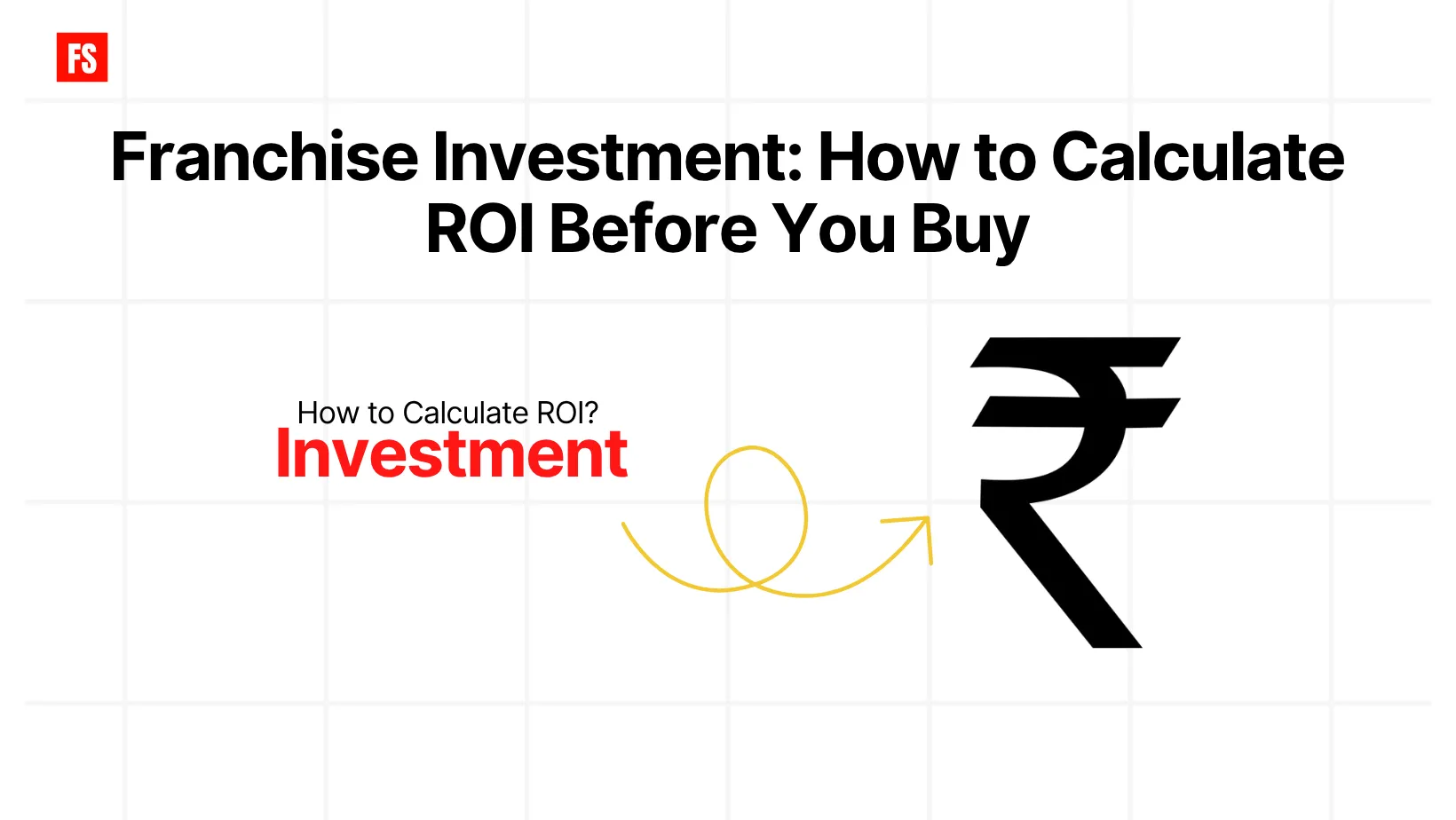Investing in a franchise investment can be one of the most lucrative ways to become an entrepreneur. With an established brand, proven business model, and operational support, a franchise offers reduced risks compared to starting a business from scratch. However, even a well-known brand cannot guarantee profits if you don’t analyze your investment carefully.
Calculating ROI (Return on Investment) before buying a franchise investment is crucial. ROI helps you understand how quickly your franchise will become profitable and whether it aligns with your financial goals. In this guide, we’ll break down everything you need to know about franchise investment ROI, from initial costs to ongoing expenses and revenue forecasting.
1. Understand the Total Franchise Investment
The first step in calculating ROI for a franchise investment is understanding all the costs involved. Many first-time investors only consider the franchise fee and ignore other critical expenses.
Key costs to include:
- Franchise Fee: One-time payment to acquire brand rights.
- Setup Costs: Interior design, equipment, furniture, and technology.
- Inventory Costs: Initial stock of products or materials.
- Staff Salaries: Wages for employees during setup and operations.
- Marketing & Advertising: Local promotions and brand campaigns.
- Licenses & Legal Costs: Registration, permits, and legal fees.
- Royalty & Ongoing Fees: Monthly payments to the franchisor.
For example, a typical franchise investment in India might cost anywhere between ₹5 lakh to ₹50 lakh, depending on the brand and industry. Knowing your total upfront and ongoing costs is the foundation for calculating ROI accurately.
Also Read this: How to Start Miniso franchise – Total investment, ROI, Royalty
2. Estimate Monthly Revenue and Cash Flow
After identifying your costs, the next step is estimating your revenue. A successful franchise investment depends on realistic revenue projections.
How to estimate revenue:
- Analyze similar franchise outlets in your city.
- Consider foot traffic, local demand, and seasonal variations.
- Use sales data provided by the franchisor for new outlets.
Once you have estimated revenue, calculate monthly cash flow by subtracting operating expenses from income. Positive cash flow indicates that your franchise investment is on the path to profitability.
Example:
- Monthly Revenue: ₹5,00,000
- Monthly Expenses: ₹3,50,000
- Monthly Cash Flow: ₹1,50,000
3. Factor in Break-Even Point
The break-even point is the time it takes for your franchise investment to recover the initial costs. Understanding this timeline helps you set realistic expectations and avoid financial stress.
Break-even Point = Monthly Net Profit / Total Initial Investment
Example:
- Total Investment: ₹25,00,000
- Monthly Net Profit: ₹1,50,000
Break-even Point = 1,50,000 / 25,00,000 = 16.7 months
Knowing your break-even timeline is essential before committing to any franchise investment.
Also Read this: India Franchise Market going to hit $140-150 billion – Project 2030
4. Include All Recurring Expenses
Many investors underestimate ongoing costs when calculating ROI for a franchise investment. Recurring expenses are essential to factor in, as they directly impact profitability.
Common recurring costs include:
- Royalty fees or brand maintenance fees
- Staff salaries and benefits
- Utility bills (electricity, water, internet)
- Inventory replenishment
- Local marketing campaigns
Subtracting these from your revenue ensures your ROI estimate is realistic and avoids unexpected financial surprises.
5. Calculate ROI for Franchise Investment
ROI (Return on Investment) is the percentage of profit you earn compared to your initial investment. Calculating ROI helps you compare different franchise opportunities and make informed decisions.
ROI formula:
ROI (%) = Total Investment / Annual Profit * 100
Example:
- Total Investment: ₹25,00,000
- Annual Net Profit: ₹10,00,000
ROI = 25,00,000 / 10,00,000×100 = 40%
A franchise investment with a 30–50% ROI is generally considered good in India, depending on the industry and location.
Also Read this: Franchise Myths Debunked: Truth About Franchising
6. Account for Risks and Contingencies
Every franchise investment comes with risks. Ignoring them can lead to overestimating your ROI and making poor financial decisions.
Common risks include:
- Seasonal sales fluctuations
- Local competition
- Supply chain disruptions
- Staff turnover
- Economic or regulatory changes
How to account for risks:
- Reduce projected revenue by 10–20% to simulate worst-case scenarios.
- Maintain an emergency fund for unexpected expenses.
- Diversify investments if possible.
Being realistic about risks ensures your ROI calculation is more accurate and reliable.
7. Compare ROI Across Multiple Franchise Opportunities
Before committing to a franchise investment, compare ROI estimates for at least 3–5 brands. Don’t just focus on upfront costs or brand popularity — consider long-term profitability.
Factors to compare:
- Total investment vs projected profits
- Break-even timelines
- Support and training from the franchisor
- Marketing assistance and supply chain efficiency
Comparing ROI helps you identify the most financially viable franchise investment opportunity in your city.
8. Evaluate Financing Options
Most franchisees don’t pay the full investment upfront. Financing is an important factor to consider when calculating ROI for a franchise investment.
Options in India include:
- Bank loans and franchise-specific financing
- Personal savings
- Investor partnerships
Remember, interest on loans affects your net profit and ROI. Include loan repayments in your ROI calculation to get a realistic picture.
Also Read this: Kag Tiles Franchise Business: Invest in South India No.1 Tile Brand
9. Don’t Rely Solely on Franchisor Estimates
While franchisors often provide projected revenue and ROI data, don’t rely solely on these numbers. Their estimates may be optimistic to attract investors.
Tips:
- Verify projections by speaking with existing franchisees.
- Check past performance of outlets in similar locations.
- Use conservative numbers to calculate ROI for your franchise investment.
A realistic approach reduces financial surprises and increases your chances of long-term success.
10. Monitor ROI Regularly After Starting
ROI calculation doesn’t stop after you buy a franchise. Regular monitoring is key to understanding if your franchise investment is performing as expected.
How to monitor:
- Track monthly revenue and expenses.
- Adjust marketing, staffing, or operations to improve profitability.
- Compare actual ROI with your initial projections quarterly.
Regular monitoring allows you to make timely decisions to enhance your franchise investment performance.
Also Read this: Chanakya Franchise is worth Investment? How to start, ROI
Conclusion
A franchise investment offers a proven path to entrepreneurship, but it is not risk-free. Calculating ROI before you buy ensures you make an informed decision, set realistic expectations, and avoid financial pitfalls.
To summarize, when evaluating a franchise investment:
- Understand the total costs, including setup and recurring expenses.
- Estimate realistic monthly revenue and cash flow.
- Determine the break-even point.
- Factor in all recurring expenses.
- Calculate ROI using conservative projections.
- Consider risks and create a contingency plan.
- Compare ROI across multiple brands.
- Evaluate financing options and interest costs.
- Verify franchisor projections with real franchisees.
- Monitor ROI regularly after starting operations.
By following these steps, you can confidently choose a franchise investment that offers profitability, growth, and long-term business stability.







